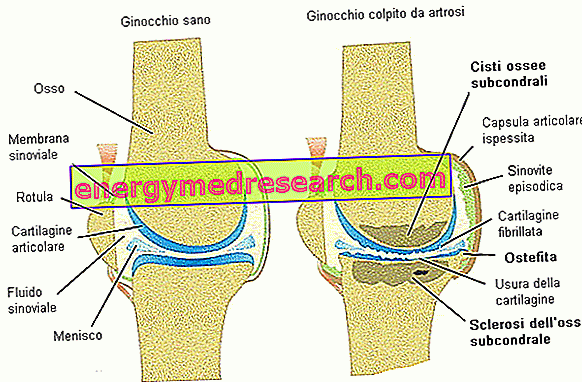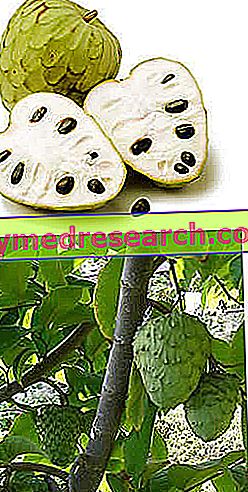Generalities on Pine Nuts
Pine nuts are the edible seeds produced by some species of pine; among these, the best known is Pinus pinea, also called "domestic" or "common" pine.

Nutritional Characteristics of Pine Nuts
Like other oil seeds (dried fruit), pine nuts are extremely energetic foods of plant origin.
The calories come essentially from lipids, of which they are particularly rich (50% of the weight of a dry pine nut). Totally devoid of cholesterol, the pine nuts instead contain high amounts of triglycerides, respectively formed by predominantly unsaturated fatty acids. Among these, to the benefit of the metabolic aspect, we can see an EXCELLENT intake of linoleic acid (an essential polyunsaturated with a cholesterol-lowering function).
The pine nuts also boast a good protein content (30% of the weight), characterized by a pool of amino acids which determines a biological value which is after all discreet; the prevailing amino acids are: glutamic acid, arginine and aspartic acid, while the limiting amino acid is lysine. It is interesting to remember that, inside the human body, arginine is considered the main precursor of nitric oxide, or a molecule able to optimize the physiological dilation of blood vessels (hence the commercial speculations on the alleged usefulness of arginine supplements in the treatment of hypertension and erectile dysfunction).
Pine nuts are also a great source of dietary fiber (4.5% of the weight) although, as we will specify below, the relative portions of consumption (reduced) reduce their nutritional intake. The quantity of carbohydrates, on the other hand, does not affect much the total energy intake of the food.
As for the saline profile, the table below shows that the pine nuts are rich in iron and phosphorus; from other sources, it appears that the concentrations of manganese, potassium, zinc and copper also do not disappoint.
With regard to vitamins, tocopherols (vit. E) are especially appreciated in pine nuts, which give the seed precious antioxidant characteristics. The levels of thiamine (vit. B1), riboflavin (vit. B2) and niacin (vit. PP) are also noteworthy.
Ideal for athletes, pine nuts should instead be consumed with VERY sparingly by overweight subjects, as 100g of dried seeds provide about 600Kcal.
Pine nuts can be a panacea for improving the lipid profile of hypercholesterolemia patients and, given the considerable presence of arginine, they could also have a certain utility in the diet against hypertension. They are also indicated for the growing subject, during pregnancy (provided that food allergy can be totally excluded) and in various conditions characterized by asthenia (some hypothesize that the pine nuts also have an energizing function independent of the caloric one). In lactation, on the other hand, they are not particularly suitable, since they are responsible for a slight gustatory alteration of breast milk. Furthermore, although their intake should increase the intake of essential fatty acids in milk, to protect the infant it is good to exclude potentially allergenic foods from the nurse's diet (a group of which the pine nuts are part).
| Composition for: 100g of Pine Nuts - Reference values of the INRAN Food Composition Tables | |||||||||||||||||||||||||||||||||||||||||||||||||||||||||||||||||||||||||||||||||||||||||||||||||||||||||||||||||||||||||||||||||||||||||||||||||
 | |||||||||||||||||||||||||||||||||||||||||||||||||||||||||||||||||||||||||||||||||||||||||||||||||||||||||||||||||||||||||||||||||||||||||||||||||
Nutritional values (per 100 g of edible portion)
| |||||||||||||||||||||||||||||||||||||||||||||||||||||||||||||||||||||||||||||||||||||||||||||||||||||||||||||||||||||||||||||||||||||||||||||||||
In general, the consumption of these small oil seeds (currently marginal) should still be re-evaluated; this does NOT mean that they have to be inserted in the customary feeding at high portions (also taking into consideration the high cost, around 45 or 90 € per kg, depending on the origin); simply. the pine nuts may have turned out to be an excellent alternative to the more common ones: walnuts, pecans, almonds, hazelnuts, pistachios, peanuts etc.
The average portion of pine nuts corresponds to about 1 tablespoon a day, or about 60kcal.
Pinus Gastronomic Applications
Pine nuts are mainly used in the preparation of desserts, such as apple strudel, and, especially at Christmas time, as a table fruit. There are also several savory recipes that include pine nuts among the ingredients. One of these is the pesto alla genovese, a traditional condiment for pasta; a very interesting variation is certainly the one proposed by Alice: Pasta with rocket pesto, ricotta, tomatoes and pine nuts. How not to mention the various roast meats, such as pork (loin), beef (scamone), wild boar, roe deer, duck, etc., which are enriched with the addition of these seeds and other ingredients. Less known but still present, some fish-based formulas; among the best known are the stewed red cod, stuffed squid, sardines in saor and various types of carpaccio.
Pine nuts are NOT easily storable foods. Although it contains a high quantity of tocopherols (vit. And antioxidant), this is not sufficient to preserve the nutritional integrity of the seed, which soon goes into rancidity of the polyunsaturated fats. However, if kept inside its shell and in cool, dry environments, the pine nuts can also be preserved for a very long time; the same cannot be said for the already peeled pine nuts (though dried), in particular when exposed to air, light and heat.
By virtue of its high lipid content, the eponymous oil can be extracted from the pine nuts by pressing; this is particularly appreciated by gourmets and by the health-conscious, both for the delicate taste (similar to that of hazelnut) and for the remarkable antioxidant properties.
Pine nut production
From 100kg of pine cones you get about 25kg of pine nuts with shell and only 6-8kg of shelled pine nuts.
To obtain the finished product, the pine cones are harvested (in the period between autumn and spring), stacked and left to dry until the first suns. The heat facilitates the extraction of the pine nuts which, after being removed, are shelled, washed, dried, selected and packaged.
Pasta with rocket pesto, ricotta, tomatoes and pine nuts
X Problems with video playback? Reload from YouTube Go to Video Page Go to Video Recipes Section Watch the video on youtube



